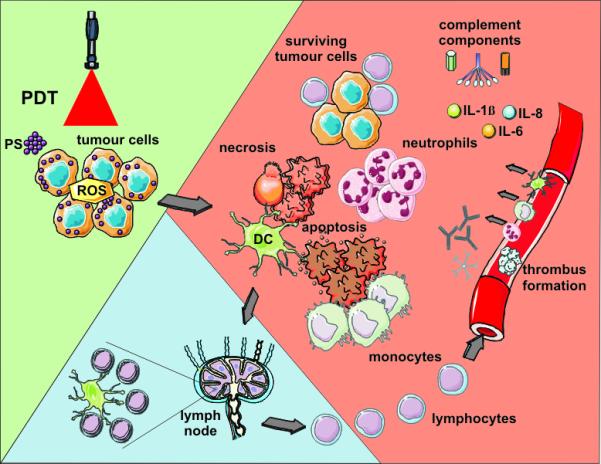Figure 5. PDT-induced effects.

Light-mediated excitation of photosensitizer-loaded tumor cells leads to production of reactive oxygen species (ROS) within these cells, leading to cell death (predominantly apoptotic and necrotic). Tumor cell kill is further potentiated by damage to the microvasculature (not shown), which further restricts oxygen and nutrient supply. Tumor cell death is accompanied by activation of the complement cascade, secretion of proinflammatory cytokines, rapid recruitment of neutrophils, macrophages and dendritic cells (DCs). Dying tumor cells and tumor cell debris is phagocytosed by phagocytic cells, including DCs, which migrate to the local lymph nodes and differentiate into professional antigen-presenting cells. Tumor antigen presentation within the lymph nodes is followed by clonal expansion of tumor-sensitized lymphocytes that home to the tumor and eliminate residual tumor cells.
